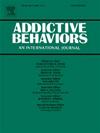青少年外向性和宜人性预测成人酒精使用:一项22年的前瞻性研究
IF 3.7
2区 医学
Q1 PSYCHOLOGY, CLINICAL
引用次数: 0
摘要
五因素模型(FFM或Big 5)的外向性、宜人性、尽责性、神经质和开放性特征都与饮酒有关。然而,这些研究中的绝大多数都使用了横断面设计,限制了评估童年人格特征与成年酒精使用模式之间的时间关系的能力。在当前的前瞻性社区队列研究中(N = 329),我们检验了儿童和青少年时期(从6-9岁开始;远早于青少年开始饮酒的典型年龄(27-30岁),平均跨越22岁。采用儿童分层人格量表(HiPIC)进行人格评估,共分5个连续波,使用多个被调查者(儿童、母亲、父亲和教师)。通过自我报告数量-频率变异性指数(QFV)测量酒精使用情况。一系列的回归分析表明,在青春期,高水平的外向性和低水平的宜人性都(独立地)与酗酒有关。从第一波青春期浪潮(12-15岁)到最后一波青春期浪潮,这些关联是强有力的和一致的。值得注意的是,儿童早期阶段(6-9岁)的信息提供者依赖测量不是显著的预测因子,强调了考虑发展背景和信息提供者可变性的重要性。通过利用纵向设计,对个性和酒精使用进行暂时分离的测量,本研究最大限度地减少了对反向因果关系的关注。研究结果强调了青少年人格特征与理解成人饮酒行为的长期相关性,并建议针对高度外向和不随和的青少年采取有针对性的预防策略,可能有助于减少以后生活中的有害饮酒模式。本文章由计算机程序翻译,如有差异,请以英文原文为准。
Adolescent extraversion and agreeableness predict adult alcohol use: A 22-Year prospective study
The Five Factor Model (FFM or Big 5) traits of extraversion, agreeableness, conscientiousness, neuroticism and openness, have all been associated with alcohol use. However, the vast majority of these studies have used cross-sectional designs, limiting the ability to evaluate the temporal relationships between childhood personality traits in adult alcohol use patterns.
In the current prospective community cohort study (N = 329), we examine the predictive value of FFM traits measured in childhood and adolescence (starting at 6–9 years of age; well before the typical age at which adolescents begin drinking) for alcohol use in adulthood (27–30 years of age), spanning an average of 22 years. Personality was assessed with the Hierarchical Personality Inventory for Children (HiPIC) across 5 consecutive waves utilizing multiple informants (child, mother, father, and teachers). Alcohol use was measured by the self-report Quantity-Frequency Variability Index (QFV).
A series of regression analyses indicates that during adolescence, high levels of extraversion and low levels of agreeableness are both (independently) associated with heavier drinking. These associations are robust and consistent from the first adolescent wave (age 12–15 years) to the last adolescent wave. Notably, informant-dependent measures from early childhood waves (ages 6–9) were not significant predictors, highlighting the importance of considering developmental context and informant variability. By leveraging a longitudinal design with temporally separated measures of personality and alcohol use, this study minimizes concerns about reverse causality. The results highlight the long-term relevance of adolescent personality traits in understanding adult drinking behavior and suggest that targeted prevention strategies focusing on highly extraverted and low-agreeable adolescents may help reduce harmful drinking patterns later in life.
求助全文
通过发布文献求助,成功后即可免费获取论文全文。
去求助
来源期刊

Addictive behaviors
医学-药物滥用
CiteScore
8.40
自引率
4.50%
发文量
283
审稿时长
46 days
期刊介绍:
Addictive Behaviors is an international peer-reviewed journal publishing high quality human research on addictive behaviors and disorders since 1975. The journal accepts submissions of full-length papers and short communications on substance-related addictions such as the abuse of alcohol, drugs and nicotine, and behavioral addictions involving gambling and technology. We primarily publish behavioral and psychosocial research but our articles span the fields of psychology, sociology, psychiatry, epidemiology, social policy, medicine, pharmacology and neuroscience. While theoretical orientations are diverse, the emphasis of the journal is primarily empirical. That is, sound experimental design combined with valid, reliable assessment and evaluation procedures are a requisite for acceptance. However, innovative and empirically oriented case studies that might encourage new lines of inquiry are accepted as well. Studies that clearly contribute to current knowledge of etiology, prevention, social policy or treatment are given priority. Scholarly commentaries on topical issues, systematic reviews, and mini reviews are encouraged. We especially welcome multimedia papers that incorporate video or audio components to better display methodology or findings.
Studies can also be submitted to Addictive Behaviors? companion title, the open access journal Addictive Behaviors Reports, which has a particular interest in ''non-traditional'', innovative and empirically-oriented research such as negative/null data papers, replication studies, case reports on novel treatments, and cross-cultural research.
 求助内容:
求助内容: 应助结果提醒方式:
应助结果提醒方式:


